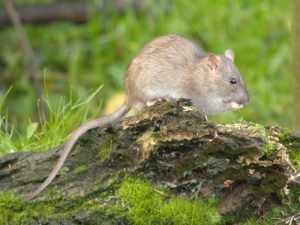 Rats
Rats
Types of Rat
Brown rats, Rattus norvegicus, are major pests because they are so numerous. Historically, they are relatively recent arrivals that quickly displaced the indigenous Black rat.
Rat Problems
They eat and contaminate stored feeds, kill young birds and carry disease, including salmonella bacteria, trichinosis nematodes, toxoplasmosis protozoa and a range of viruses. From man’s point of view, the most serious threat is Weil’s disease. (If there is any evidence that rats have been around, it is important to wash hands after touching any surfaces where their saliva, urine or droppings may have been deposited. Treat any cuts and grazes with antiseptic and keep them covered).
How Many Rats? Finding the Rats
If you see one rat, you can be certain that there is already a colony nearby. Their average foraging distance is usually no more than 50 metres from the nest. Having once established routes from the nest to the food source, they will travel along the same ‘runs’ each time they visit. This tendency makes it relatively easy to control them.
Rat Hiding Places
Try to identify possible hiding places. Are there any identifiable runs indicated by flattened areas of vegetation or soil running along the edges of buildings or other structures? Cut down tall weeds growing against buildings and clear areas where piles of timber or flagstones may have been left for some time. They often conceal rat runs.
Inside outbuildings, paint a white strip along the floor perimeter to show up the presence of droppings more easily. The spindle-shaped droppings are quite large; up to 2cm long. Look out for evidence of gnawing.
Rat-Proof Feed Storage
All feeds should be stored in a rat-proof building or in a strong container with tightly fitting lid. Dustbins, both metal and heavy-duty plastic, are a good option for low-cost and effective storage. Avoid leaving food lying around and if the hens are in a moveable house and run, move the whole structure fairly frequently.
Self-Operating Feeders
Self-operating feeders can be used where raiding rats or wild birds are feeding at your expense. These are feeders that dispense a certain amount of feed to the ground when the hen displaces the feeding mechanism. This is either a lever that is moved by the beak or a pedal that operates by the bird’s weight. In the former case, the dispenser is too high for rodents or wild birds to reach, while in the latter case, they are too light to displace it.
Article taken from original work by Katie Thear, with permission of the publisher.
Further Articles of Predator Protection
- Dealing with Rat Infestations: Protecting the Poultry Flock
- Electric Fences Protecting the Poultry Flock from Predators
- Foxes & Fences: Protecting the Poultry Flock from Foxes
- Larger Predators & Thieves: Protecting the Poultry Flock
- Mink, Weasels, Stoats & Hawks Protecting the Poultry Flock
- Pest Control, Rats & Mice Protecting the Poultry Flock
- Pest Control, Traps & Deterrents Protecting the Poultry Flock against the Fox

